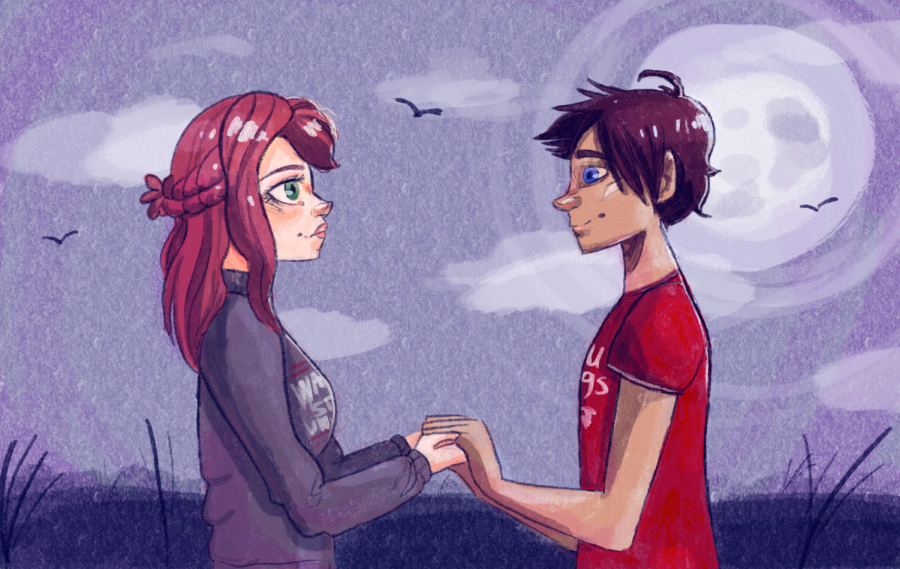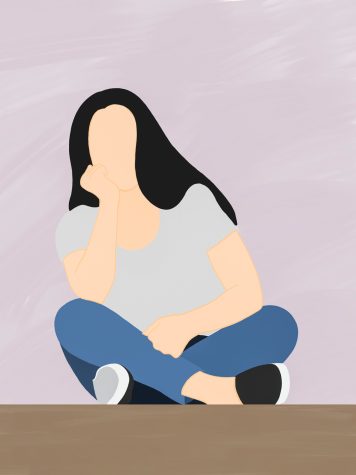Attachment theory helpful for relationship health
Avoid emotional turmoil and heartbreak by understanding the different adult attachment styles
Love is a beautiful phenomenon that comes in many forms, but love cannot overcome the dynamics of the attachment theory of love. Based on your and your partner’s attachment style, the theory can predict the outcome of the relationship, regardless of your love for each other.
August 26, 2021
For many students, especially incoming freshmen and sophomores, going to college is the first experience we have with living on our own. You are going to experience new things, meet new people and take on new responsibilities without the scrutiny of parental figures.
As your pseudo-parental figure, I am going to give you some advice regarding adult relationships, which will be valuable throughout the remainder of your life.
It is possible one of your peers might be your future spouse, but it is also possible one of your peers might be your greatest heartbreak. To find love and avoid heartbreak, it is helpful to know the attachment theory of love.
The theory characterizes adults by one of three attachment styles: secure, anxious and avoidant.
Secure individuals are comfortable with intimacy and are generally affectionate and thoughtful.
Anxious individuals desire intimacy and tend to obsess over their relationship and their partner’s love for them.
Avoidant individuals associate intimacy with the loss of independence and tend to minimize closeness.
The theory centers around finding a partner who fulfills the fundamental attachment needs and feels comfortable acting as a secure base. Research suggests individuals with a secure attachment style are compatible with partners of any attachment style. Individuals with an anxious or avoidant attachment style are only compatible with partners with a secure attachment style.
My advice, paralleling the suggestions of other psychologists, is to avoid anxious-avoidant relationships because each partner reaffirms the other’s beliefs about themselves and relationships.
Avoidant individuals believe others want more intimacy than they are comfortable with, reaffirming their sense of independence. Anxious individuals believe they want more intimacy than others are comfortable with, reaffirming their sense of being neglected by others.
Rufina Everett, Northwestern University sophomore civil engineering major, experienced an anxious-avoidant relationship.
She met someone at a party, and they instantly hit it off. They went out on a couple of dates, and she thought their relationship was headed in the right direction. Despite his frequent remarks, he never had a stable relationship and often grew tired of his girlfriends. She believed love conquered all and he was going to commit soon.
During the span of the relationship, he slowly distanced himself from her, coming up with excuses to avoid her company. As a result, she rapidly grew more preoccupied with the relationship, thinking about his whereabouts and little signs to suggest his desire to break up.
She explained there were many instances where she was on the verge of breaking up with him due to the lack of affection, but she ultimately never did.
“Looking back on it, he was very manipulative. He pushed me away with enough affection to keep me from breaking up with him,” she said. “I should have ended it sooner because of the emotional drain, but I loved him so much.”
She, like many others, experienced the emotional turmoil and heartbreak from the anxious-avoidant relationship because she had no knowledge of the attachment theory of love.
Interestingly, the anxious-avoidant trap can transcend from romantic relationships to friendships.
Emma Peirano, WSU junior viticulture and enology minor, described how her attachment style — anxious — was activated by friendships rather than romantic relationships.
When COVID-19 hit the nation, Peirano and her friends returned home for the remainder of the spring semester and the following fall semester. In January, Peirano decided to stay home rather than return to campus like her friends.
She explained how none of her friends reached out to her, which often lead to thoughts like, “Did I do something wrong?” or “Do they still like me?”
“When I [finally] returned to campus, I still thought ‘Do these people still like me?’ and ‘Did I make the right decision to come up [to campus]?’” Peirano said. “Overall, I was very anxious about where my place was with these people.”
I want to help as many people as possible from the anxious-avoidant relationship. Thus, let me leave you with six significant signs of the anxious-avoidant trap, described by psychiatrist and neurologist Amir Levine and psychologist Rachel S. F. Heller:
- The avoidant partner sending mixed signals that influences their anxious partner to be preoccupied with the relationship.
- The avoidant partner having greater self-esteem and sense of independence when their anxious partner feels needy and incapable.
- The relationship always having an element of uncertainty.
- Both partners constantly fighting about things that should not matter.
- The anxious partner getting treated horribly as they grow closer to the avoidant partner.
- Both partners knowing the relationship should end but are too emotionally connected to leave each other.
If you discover you have an anxious or avoidant attachment style, do not despair. People grow, people evolve and people mature. Research suggests approximately 25 to 30 percent of the population changes attachment styles over the span of their lifetime.
As you walk around the WSU campus and meet new people from different cities, states and countries, try to identify others’ possible attachment styles based on their behavior. The knowledge of others’ attachment styles can help guide you away from problematic relationships toward healthy ones.
As the saying goes, “Be with someone who always wants to know how your day was.”
To discover your attachment style, click here to take the adult attachment questionnaire.






















Mario • Aug 28, 2021 at 5:27 am
The amazing report “The Attraction Triggers” is absolutely FREE to download! Worth reading!
https://www.slideshare.net/MariuszWjcik11/the-attraction-triggers-250069096